Imaginary Country
by Sttwn
Files
This work has been commented by 2 curator(s). Read the comments
Title
Imaginary Country
Headline
Your imaginary country
Concept author(s)
Scott Townsend
Concept author year(s) of birth
02-19-1964
Concept author(s) contribution
All-
Concept author(s) Country
United States of America
Friendly Competition
Love Conflict Imagination (2010-2011)
Competition category
Visual communication practice
Competition subcategory
web / interactive
Competition field
academic
Competition subfield
educator/researcher
Subfield description
College of Design- Graphic Design
Check out the Love Conflict Imagination 2010-2011 outlines of Memefest Friendly competition.
Description of idea
Describe your idea and concept of your work in relation to the festival outlines:
Most of the work was developed in and for areas in conflict. There are several examples:
I. (earlier work: http://www.imaginarycountry.org/www_09/research.html
-and "Borderline Series")
An urban neighborhood in the United States with an influx of people from Central and South America in conflict with a traditional European/American population. The pieces were about bringing some kind of reflection and conciliation with both sides when it was exhibited, with other programming from community leaders from both sides.
II. "Your Imaginary Country: the Berlin Wall and the Southwest Border Initiative” 2008 and 2010. Another project tied together two parts of the globe that have a history with a "Wall"-
http://www.imaginarycountry.org/www_09/research.html
The Imaginary Country project was shown in Berlin and in the Southwest US- and linked through the web so that answers from both places could be shown together from the audiences. It developed stories and audience based questions about political and economic exclusion of people from each country at a particular time and place- comparing the German “Wall” with the US "wall:" the Strategic Border Initiative, which literally is an update on the Berlin Wall physically. Audience answers became part of the project- both sides were appalled that a) something like this was happening once again in a "democracy," (the Berlin audience) while the U.S. audience understood the comparison (though it was broken down in terms of what motivates the idea of a "wall") since so much of U.S. ideology is about the iconography of the end of "communism" in Europe.
III. The projects tend to elicit audience responses both in the work (answers from the audience become part of the work electronically) that fall into all of the love/conflict/imagination categories in your proposal call.
see documentation at:
http://www.imaginarycountry.org/www_09/research.html
-and the Visual Communication project (print based - Sage Publishers in the U.K)
In the projects that I develop, people talk about imagining what their new community could be like- they evidence conflict between themselves and the reality- (often about conflicts between not only the new community that they live in, but also conflicts with their family and expectations of being fully from both cultures) The conflicts of course are often induced from governments and economies in conflict- such as the current EU economic situation and smaller countries (see the project "Marriage of Convenience"
done with collaborators in Lithuania in 09-
http://www.imaginarycountry.org/www_09/research.html)
IV. Finally- my most recent work tries to raise issues about how we imagine relationships based on body metaphor- see www.imaginarycountry.org/ch_2011
and the interactive animation "pulse" in particular. This was done in a major corporate city in the United States- which is the second largest banking center in the U.S. (behind NYC).
checklist:
PLEASE NOTE: REALLY IMPORTANT: I talked with Oliver and he encouraged me to be more thorough in my submission. I have done so in this "Project 2" brief- the site will not allow me to edit Project 1. I hope this makes sense to the reviewers!
For “live” versions of the work, please see http://www.imaginarycountry.org/LT/
addnl work can also be seen in proposal format at
http://www.imaginarycountry.org/www_09/index.html
I. Statement (please note- these are projected works- + online versions, size variable, with audience input changing the visual displays in real time, technical detailed out later in checklist)
My original background is in photo, bookmaking and typography. My newest work uses animated drawings, writing and typography to develop relationships with an audience. I make interactive pieces that combine viewer participation with visual and verbal stories about cultural identity. In the last eight years I have concentrated on exhibitions of this work often in residence at the site of the exhibition, and usually within an academic or nonprofit context. These contexts invariably are in “hotspots” where cultural identity and language are being contested, such as in particular border areas, or in regions where globalization issues are creating pressures on particular communities. These pieces are often developed in other languages, (so far, in Spanish, Czech, Japanese, German and Lithuanian as well as English). I also publish on these issues (Brújula {published by the Hemispheric Institute of the Americas} Design Issues, Visual Communication, Zed, and Design and Culture), and am very interested in education and outreach. The work that I propose to show is excerpted in slides 8, 9, and 10 and is comprised of 6-7 animations total (please see description later in text).
II. Checklist- Selected Recent work
Image 1:
Examples of installations and schematic
Images 2 and 3:
Excerpts: Your Imaginary Country, Berlin and the South West U.S. Border, Berlin, 2008/updated project 2010 Texas
http://www.imaginarycountry.org/berlin/aaaindex.html
In the twenty years since the fall of the Berlin Wall, issues of identity, communities, and history are often accompanied by personal and social conflict. In particular East Berlin neighborhoods, many of the same basic issues of “gentrification” that many US cities have faced for the last 25 years is occurring. With development comes the literal erasure of the identity of East Berlin through the razing of many of its public spaces, creating a sense of ambiguity and confusion for the original East Berliners that still live there. The project Your Imaginary Country: Berlin and the South West U.S. Border, was created to contrast this environment with the current border project in the United States. There are two “parts:” one part of the project visualizes the local space and the Berlin wall based on various research and documentation sources. The project has a separate section that uses the metaphor of “split hemispheres” (the split hemispheres of the globe, the “split hemispheres” of personal identity) to engage audience participation. Audience members participated in real time in answering questions relative to their own social identity, which was then shown as part of the project/installation.
Image 4:
Excerpts: Map Stories, Tokyo, 2007
Storyboard from one piece of an interactive exhibition shown in Tokyo in 2007. The exhibition/project was about traditional Japanese culture and the new influx of ideas from abroad. It was shown close to Shinjuku, the area of Tokyo with the highest concentration of foreigners in the region. This piece compares entry points in a country with “entry points” of a body (mouth, ears, eyes, etc.) and presents a story that combines both experiences. In addition to the chronology of answers added to the piece, readers are invited to write short texts that are added to the visualization, and may also be scrolled through during the exhibition.
Images 5, 6 :
Excerpts: Marriage of Convenience, National Museum Lithuania- selected excerpts, 2009
“Marriage of Convenience” is a site-specific project installed at the National Museum in Kaunas, Lithuania in October 2009.
Large political and economic forces are changing the way that people live: the growth of the European Union is one such example. Countries all over the world are experiencing the effects of globalism, where economic ties become so important that very few countries can be isolated from each other. Along with economic development also come immigrants and ideas from outside, influencing customs, histories and languages. Baltic countries are in a unique position. They have strong historical identities, language, and customs. At various points their language and history was repressed politically. This has now changed- but how can the identity of a group be maintained and nurtured with the new economic and political forces at work? Is the E.U. a “nation,” or is it something different that has to be negotiated? “Marriage of Convenience” is an interactive work that invites viewers to add their ideas and voice to this discussion in a public space. The answers provided by the viewers will not be used for anything other than the public discussion of these ideas over the time of the exhibition. All answers are anonymous.
Images 8, 9, 10, 11 + 12
Excerpts: Human Capital, McColl Center for Visual Arts- selected excerpts 2010-2011
Human Capital will be exhibited at the McColl Center for Visual Arts in January 2011. These pieces are not site-specific as in previous work, and expand on the visual language and animation. This body of work was partly created in response to Charlotte’s position as a major banking center (second only to New York). The organizational and high-tech methods that institutions use to get their work done interconnects a global work force. Local communities with global connections are part of this new landscape, where the lure of opportunity and a job elsewhere places people in geographies that are utterly foreign to them.. A visual metaphor used in this exhibition is of growth: “seed,” “graft,” “bloom,” etc. an appropriate metaphor for this new environment, which literally grafts one culture to another, where people migrate for economic opportunity, and where the legacy of these interconnections create a very different way of thinking about who we are and what kind of community that we will create for ourselves.
IV. Installation and shipping:
The interactive animations use flash-based animation with a connection to a server for audience answers to be archived and then shown within the pieces in the gallery. There is also an online component for a “virtual exhibition” so that people can participate outside of the gallery space. The gallery space will include 4-7 simple pedestals with computer mouse, and each piece is projected from an equipment box that houses a digital projector and laptop computer. Equipment is provided (laptop, projector, sound, pedestal, equipment boxes [which are secured]). Installation for one piece takes 1.5 hours. This can be accomplished by myself or by someone at the gallery based on simple instructions. On computer start up, the interactive piece is loaded. The exhibition time limit is flexible. Previous pieces have run continuously from fourteen days to 8 weeks in other galleries. In seven years of working with similar technology, no problems have occurred. For this installation, no connection to the Internet is required.
What kind of communication approach do you use?
site specific work with simultaneous distribution
What are in your opinion concrete benefits to the society because of your communication?
A sense of awareness about a topic based both on regional issues and what is often behind them re issues of globalization. This tie is always lost- but by combining audiences, discourse can occur about the larger framing of the issues.
What did you personally learn from creating your submitted work?
I have learned through these projects that there is a tie between theory and practice, and that by working with collaborators, the ideas are shared and go forward in some positive form- it has a cumulative effect in collaboration and distribution.
Why is your work, GOOD communication WORK?
I think it's effective- I can judge results directly from participation at the time and by watching and participating in the discourse as it expands out after the project. It is inherently discursive- works created still are part of the community memory and have sparked shifts in thinking in those communities.
Where and how do you intent do implement your work?
My current work is in a project in Charlotte (see descriptions at top). I have additional proposals out at this time- again, through collaborators the projects will go forward through the online and actual community that is formed out of these particular proposals
Did your intervention had an effect on other Media. If yes, describe the effect? (Has other media reported on it- how? Were you able to change other media with your work- how?)
Curators Comments
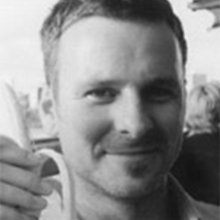
Jason Grant
This seems a really exciting project.
I write 'seems' because despite the length and density (what's wrong with paragraph breaks and sequential thoughts?) of the introductory explanation I had trouble getting to the substance of the work itself. I was hoping for some video of the work in-situ, but could only find some brief animations and a collection of intriguing stills (apologies if I just missed them). So based on this info I'll bet that this is what I always think of as truly imaginative visual communication. Design that engages with the real and deep themes of people's lives.
The themes of identity, translation and permeable borders is suited to the engaging directness of the media.
Although there is a vectory/Flash-y aesthetic that can feel limiting, this would be mitigated in-situ especially if the interactive work was projected onto surfaces rather than read on a monitor (scale too would be a critical factor?). In the micro, the sophistication of much of the typography and illustration is compelling. In the macro, the ambition of the research and community implementation is an inspiration.
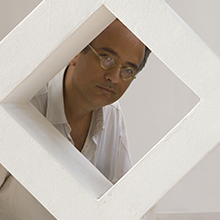
André Vallias
An overwhelming project concerning one of the most crucial discussions of contemporary world.
Comments
14 years, 4 months ago
New work is coming along that is more directly collaborative with an audience in terms of story telling working with a particular geographic area. It will essentially allow people with different experiences to map a space that they share with other people, and define very specific "borders" in terms of how they interact in the space. For example, what someone of a particular group perceives of as a center or landmark of a public space can also be seen as a place of exclusion for another group. This sounds a bit dry, but when it is applied to particular situations if can be highly effective both as a kind of visualization and statement, and also as a way to start to accommodate others. I need to post some of that asap- it's going well.

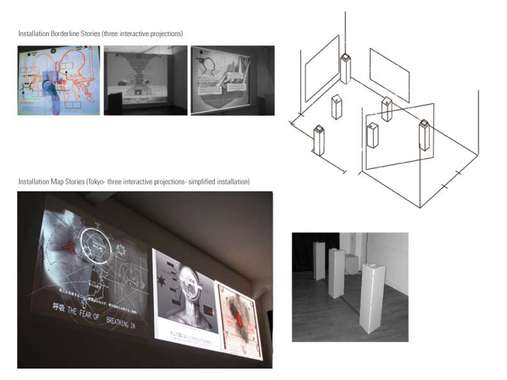
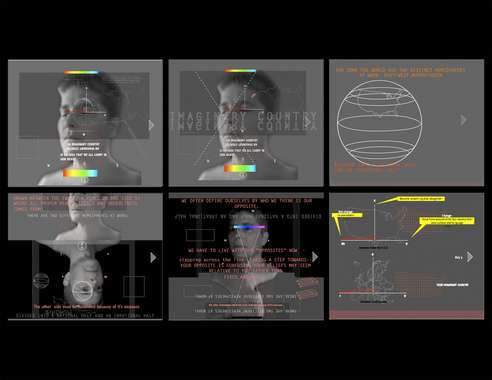
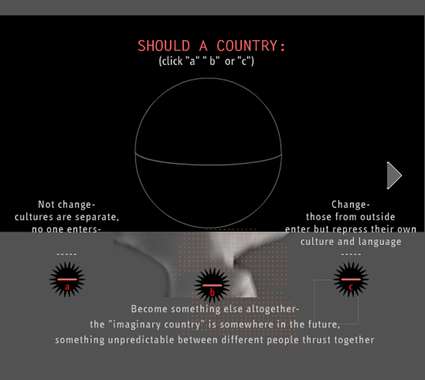

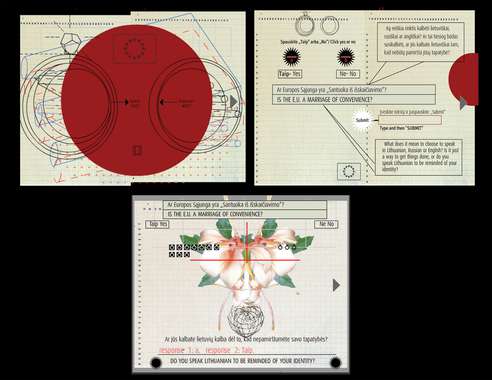
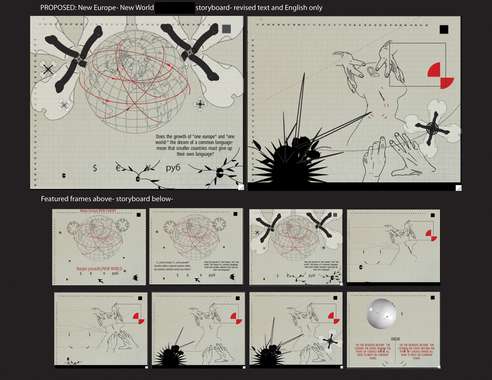
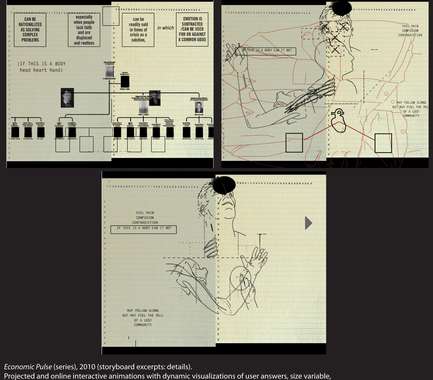
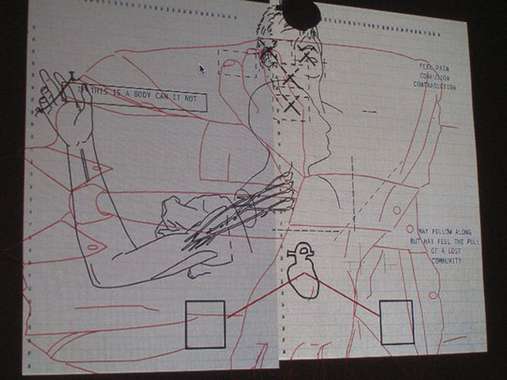
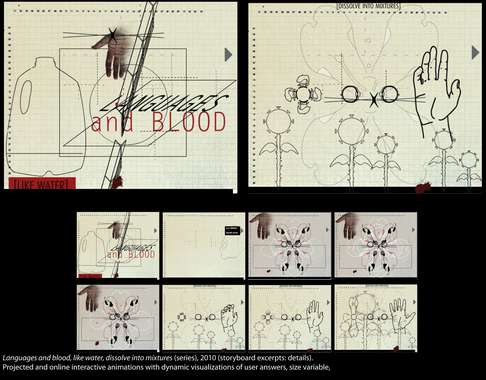
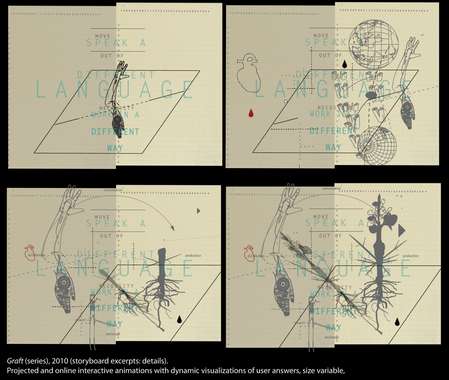
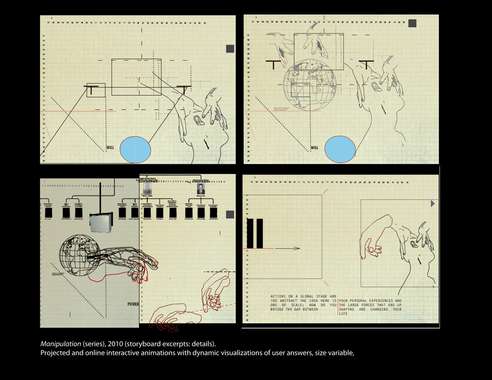
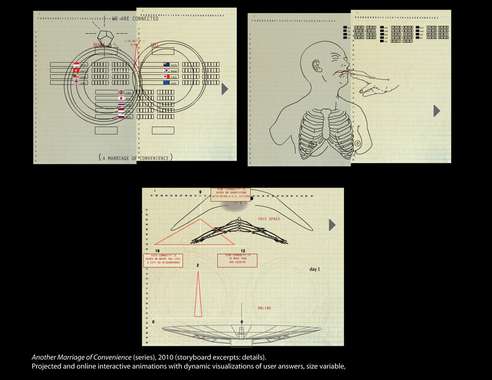








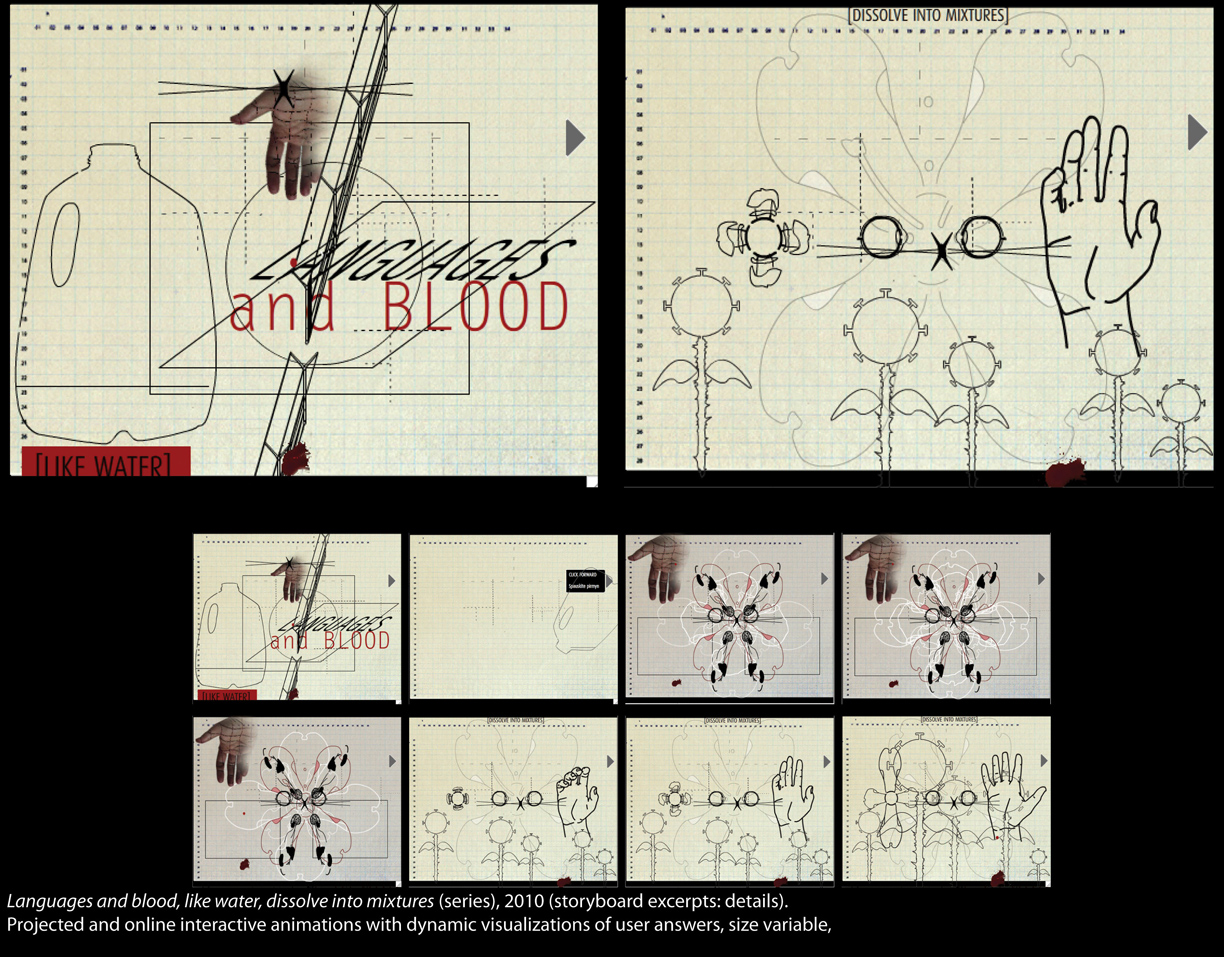



14 years, 4 months ago